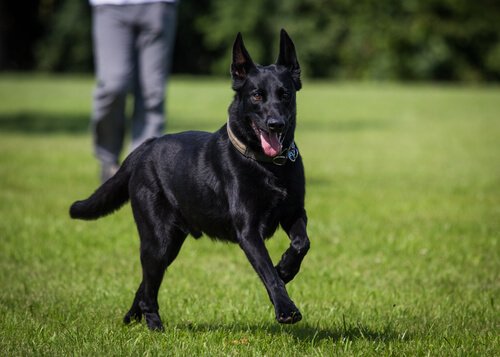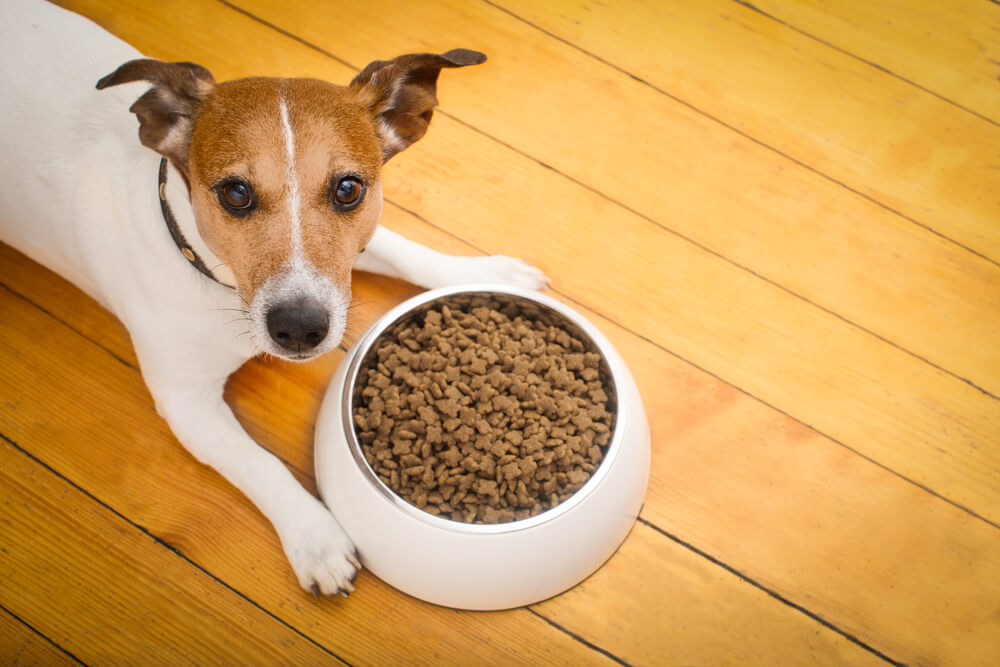How To Tell if Your Dog is Fat or Skinny

It’s hard to say whether a dog is fat or skinny if you don’t know the ideal size and weight of their breed. So, today we’re going to give you some tips on how to tell where your dog falls on the spectrum, and what you can do to make sure they are at a healthy weight.
Extremes are never good, so if your dog is either too fat or too skinny, you need to address it. Read the following tips on knowing how much your dog is supposed to weigh, and what you should do if they’re not at an ideal weight!
Fat or skinny: how to know if your dog is at an ideal weight

Your dog’s weight can vary a lot depending on their breed, size, sex, and age. However, their living conditions are also important. For example, a dog that lives in the country will probably be in much better shape than one that lives in a city. Of course, that’s not always the truth and there are fat country dogs and city dogs that are in peak physical conditions.
So, what exactly should you look at to determine if your dog is fat or skinny?
Walking tires your dog out
If your dog has a hard time walking even without doing any exercise that day, they might be a bit overweight. Even if they don’t look like it, don’t rule this possibility out. Take your dog to the vet to be sure they don’t have a respiratory problem or something like that.
Visible fat
As humans, it’s usually easy to spot excess fat on a dog, especially if you see its stomach flopping around while they walk. That’s a clear sign your dog is overweight.
Diet
If you notice your dog has been eating less, most likely they are losing weight. There’s usually a reason why a dog is experiencing a lack of appetite, so it’s best to take them to the vet to find out what’s happening to them.
If your dog is experiencing a more drastic, sudden change in weight, you should always take them straight to the vet. Don’t risk your dog’s health.
What to do if your dog is too fat or skinny
If you’ve taken your dog to the vet and they’ve told you there’s nothing wrong with them, then there are some simple things you can do (or not do) to help them maintain an ideal weight.
If they’re too fat
- Diet. If you’ve had your dog since it was a puppy and have always given them the same food, then probably that could be part of the problem. Young dogs need more fat for their energy levels. Adult dogs don’t need as much, so you make sure you feed them low-fat food. What it definitely does need to be high in is protein.
- Exercise. How much, and what kind of exercise they need depends on their breed, size, and age. First, talk to your vet about what kind of they should do. In the meantime, you can always take them on walks or let them run around on a field or beach.
- No more treats. If you always reward your dog with treats, you’re going to have to stop, at least until they get back to an ideal weight.
- Don’t let them hang around while you cook. Something always ends up falling on the floor while we cook, and dogs will scarf them down in a flash. Putting your dog in another room while you cook can put a stop to this problem. Besides, even though it’s so tough to say no when they give you their sad eyes, it would probably be best for them not to be there.
If they’re too skinny

If your dog is too skinny, don’t force feed your dog. That just causes problems. It’s best to talk to your vet and have them help you develop a diet that’s high in calories and nutrients. This is the best way for your dog to get back to an ideal weight without having to ingest a bunch of fat.
Always keep a close eye on your dog. Poor nutrition isn’t the only thing that could make a dog lose weight. Therefore, you should take them in for occasional check-ups to make sure your dog is healthy. That you don’t have to worry so much about your dog’s health.
It’s hard to say whether a dog is fat or skinny if you don’t know the ideal size and weight of their breed. So, today we’re going to give you some tips on how to tell where your dog falls on the spectrum, and what you can do to make sure they are at a healthy weight.
Extremes are never good, so if your dog is either too fat or too skinny, you need to address it. Read the following tips on knowing how much your dog is supposed to weigh, and what you should do if they’re not at an ideal weight!
Fat or skinny: how to know if your dog is at an ideal weight

Your dog’s weight can vary a lot depending on their breed, size, sex, and age. However, their living conditions are also important. For example, a dog that lives in the country will probably be in much better shape than one that lives in a city. Of course, that’s not always the truth and there are fat country dogs and city dogs that are in peak physical conditions.
So, what exactly should you look at to determine if your dog is fat or skinny?
Walking tires your dog out
If your dog has a hard time walking even without doing any exercise that day, they might be a bit overweight. Even if they don’t look like it, don’t rule this possibility out. Take your dog to the vet to be sure they don’t have a respiratory problem or something like that.
Visible fat
As humans, it’s usually easy to spot excess fat on a dog, especially if you see its stomach flopping around while they walk. That’s a clear sign your dog is overweight.
Diet
If you notice your dog has been eating less, most likely they are losing weight. There’s usually a reason why a dog is experiencing a lack of appetite, so it’s best to take them to the vet to find out what’s happening to them.
If your dog is experiencing a more drastic, sudden change in weight, you should always take them straight to the vet. Don’t risk your dog’s health.
What to do if your dog is too fat or skinny
If you’ve taken your dog to the vet and they’ve told you there’s nothing wrong with them, then there are some simple things you can do (or not do) to help them maintain an ideal weight.
If they’re too fat
- Diet. If you’ve had your dog since it was a puppy and have always given them the same food, then probably that could be part of the problem. Young dogs need more fat for their energy levels. Adult dogs don’t need as much, so you make sure you feed them low-fat food. What it definitely does need to be high in is protein.
- Exercise. How much, and what kind of exercise they need depends on their breed, size, and age. First, talk to your vet about what kind of they should do. In the meantime, you can always take them on walks or let them run around on a field or beach.
- No more treats. If you always reward your dog with treats, you’re going to have to stop, at least until they get back to an ideal weight.
- Don’t let them hang around while you cook. Something always ends up falling on the floor while we cook, and dogs will scarf them down in a flash. Putting your dog in another room while you cook can put a stop to this problem. Besides, even though it’s so tough to say no when they give you their sad eyes, it would probably be best for them not to be there.
If they’re too skinny

If your dog is too skinny, don’t force feed your dog. That just causes problems. It’s best to talk to your vet and have them help you develop a diet that’s high in calories and nutrients. This is the best way for your dog to get back to an ideal weight without having to ingest a bunch of fat.
Always keep a close eye on your dog. Poor nutrition isn’t the only thing that could make a dog lose weight. Therefore, you should take them in for occasional check-ups to make sure your dog is healthy. That you don’t have to worry so much about your dog’s health.
This text is provided for informational purposes only and does not replace consultation with a professional. If in doubt, consult your specialist.







